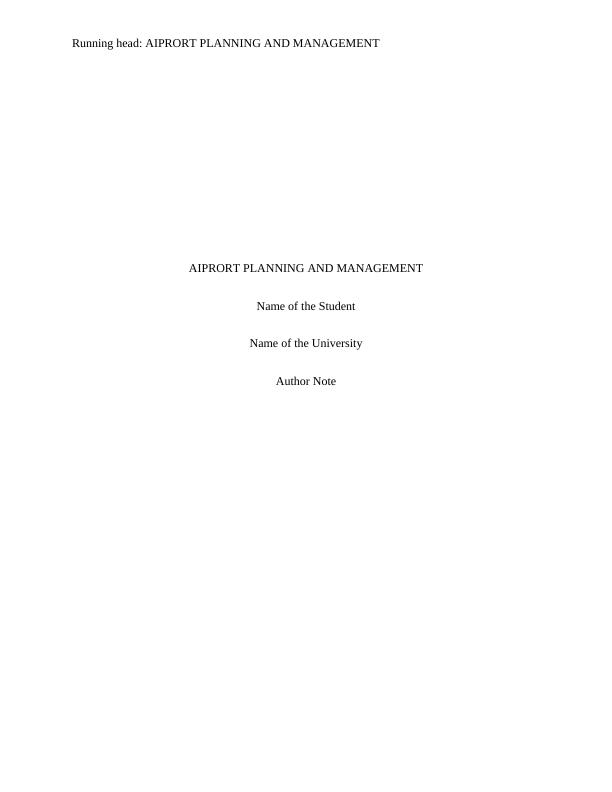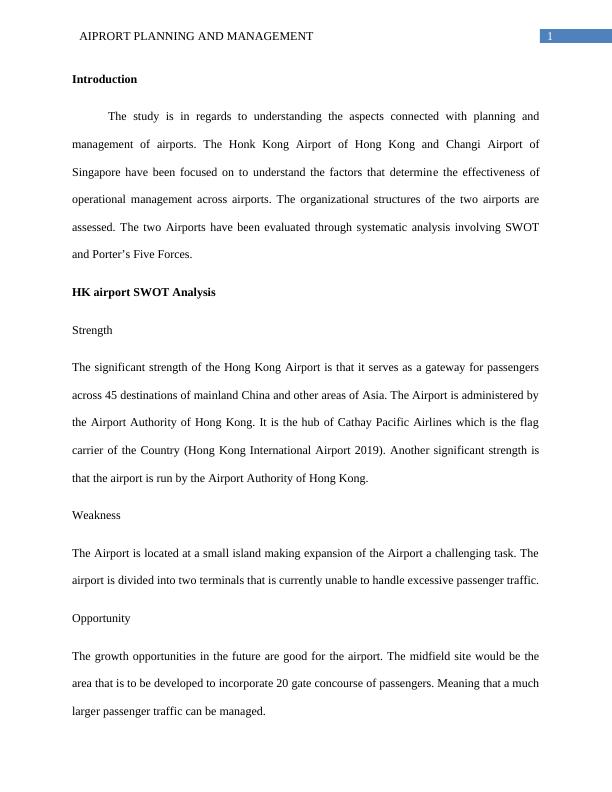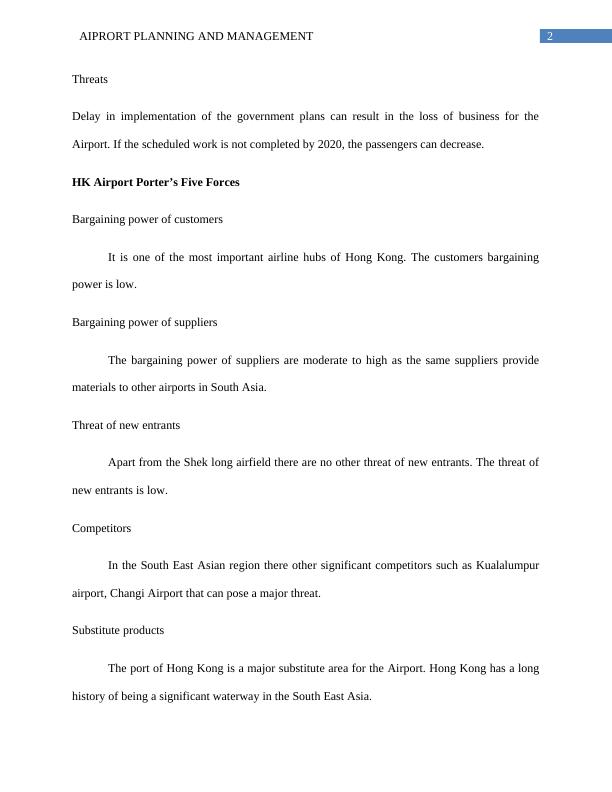Airport Planning and Management
7 Pages1022 Words351 Views
Added on 2023-04-21
About This Document
This study focuses on the planning and management of airports, specifically Hong Kong Airport and Changi Airport. It analyzes their organizational structures, conducts SWOT and Porter's Five Forces analysis, and discusses their strengths, weaknesses, opportunities, and threats. The study concludes that the future growth of these airports depends on government planning and infrastructure development.
Airport Planning and Management
Added on 2023-04-21
ShareRelated Documents
End of preview
Want to access all the pages? Upload your documents or become a member.
Innovation & Change: Business Environment Analysis
|17
|4444
|86
Key Markets of Asia Pacific
|11
|1628
|11
Introduction to Management of the Organization
|15
|3443
|121
Strategic Analysis of CLP, Microsoft, Sony and Tesco
|14
|3848
|231
Strategic Management: Analysis of Emirates Airlines
|12
|724
|96
Auditing Strategic Management of Cathay Pacific
|30
|7073
|256



